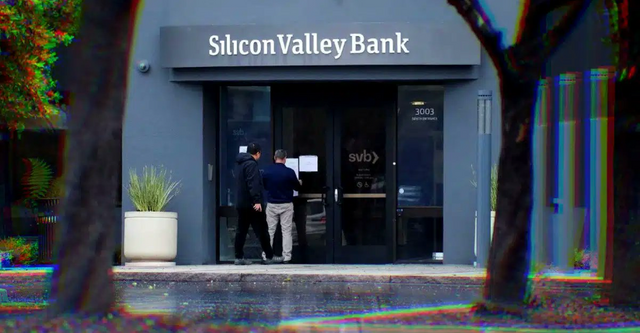
The bankruptcy of Silicon Valley Bank was described as the second largest bank failure recorded in the United States in terms of total assets.
So why did the bank collapse and how did the developments trigger the rise in the crypto industry?
Silicon Valley Bank's clients are tech entrepreneurs. In fact, it was simply a bank working with Start-ups in Silicon Valley. Nor was it a malicious, fraudulent, thief, or risk-taking bank.
On the contrary, it was a very well-intentioned bank. When he couldn't find anyone who could give a loan to use the deposit he collected in a very high amount before the interest decisions, he went and invested in government bonds like other banks.
But interest rates were low when he invested in government bonds. When the FED started to raise interest rates rapidly, the value of those papers began to melt where they were. In the face of this meltdown, the bank panicked and tried to sell some of the papers and get cash.
The SVB sold a $21 billion bond portfolio Wednesday, mostly made up of US Treasury bonds.
The portfolio averaged a yield of 1.79 percent, well below the 3.9 percent yield on 10-year Treasury bonds.
This forced the SVB to accept a loss of $1.8 billion, which it had to fill through a capital increase.
The secured bonds had to be sold at a loss, and the bank tried to raise additional capital through outside investors but was unable to find it.
The SVB announced on Thursday that it will sell more than $2 billion in stock to fill the funding gap, and the bank's share price tumbled more than 60 percent after the announcement.
This flashy tech-focused bank was smashed by one of the few ways that could absolutely fail a bank: Because that's when the "bank run" happened.
bank run; means bank backlog and is the situation in which the depositors (depositors) of a bank collectively attack that bank to exchange their accounts.
Evaluating this news from the bank, the depositors tried to save their money by rushing to the bank, and within 24 hours, the 16th largest bank in the USA went bankrupt despite its $200 billion size.
After some venture capital investors advised companies to withdraw their money from the bank, the bank's transactions in the futures market continued as losses continued.
The bank regulators were left with no choice but to confiscate the assets of the SVB to protect the remaining assets and deposits in the bank. The SVB struggled on Friday to find an alternative financing route, such as the sale of the company.
However, on the same day, the Federal Deposit Insurance Corporation (FDIC) announced that a trustee had been appointed to the bank.
A wave of panic began to spread over this event. The possibility of this fire spreading to all banks started to be talked about; The FED saved it in a very creative way.
The rescue operation, which also handcuffed the FED's own hands, went like this: They did not try to keep the company afloat by injecting money directly into the company. Instead, they did the right thing and said:
“The company is none of our business. Let the shareholders go bankrupt, the owners of the company unemployed, there is nothing to be done about it, but there are people who deposited there and they did not have a share in the management and could not know what would happen. We need to save them"
In the U.S., there is normally a $250,000 cap on deposits, which replaces insurance. He does not pay the deposits on it, but due to the nature of the bank, since the money here is the money of the companies, 95% of the deposits were over 250,000, and the panic was already arising from this.
Yesterday, the Fed put out $25 billion in money and said that as of Monday, depositors can come and withdraw all their money. This was a step that stopped the fear in the markets. But we need to pay attention to that; they don't buy the company, they just provide a fund.
The first thing they tried to do was to relieve the anxiety, because other depositors could actually attack other banks and this panic could spread.
We come to the point where we need to pay attention; In this solution of the FED, there is another side that ties its hands in the interest rate hikes. SVB is not the only bank in trouble because it has low-interest treasury bonds on its balance sheet.
According to the data released yesterday, the American banking system has accumulated a loss of 750-800 billion dollars due to these papers, and if the FED continues to increase interest rates, this loss seems to grow even more. As this loss grows, new bankruptcies will be inevitable.
As a matter of fact, Signature Bank went bankrupt yesterday. The common point of previously failing Silvergate Bank, Signature Bank and Silicon Valley Bank was that they invested heavily in these low-interest government bonds.
Since these cards are spread throughout the system, they may all suffer the same end when depositors rush to get their money. This solution will not only be valid for SVB or Signature Bank, they will give it to all banks that have a similar problem.
At the moment, 750 billion dollars are being talked about, which means quite a bit of monetary expansion. If the Fed raises interest rates by 50 basis points in March, this loss will grow even more. Maybe 25 basis points to keep the queue up.
As you can see, the FED seems to have come to the end of the road in terms of interest rate hikes if there is no further development. You have also seen how the markets reacted in the light of these developments. I will inform you again when there is a different development.